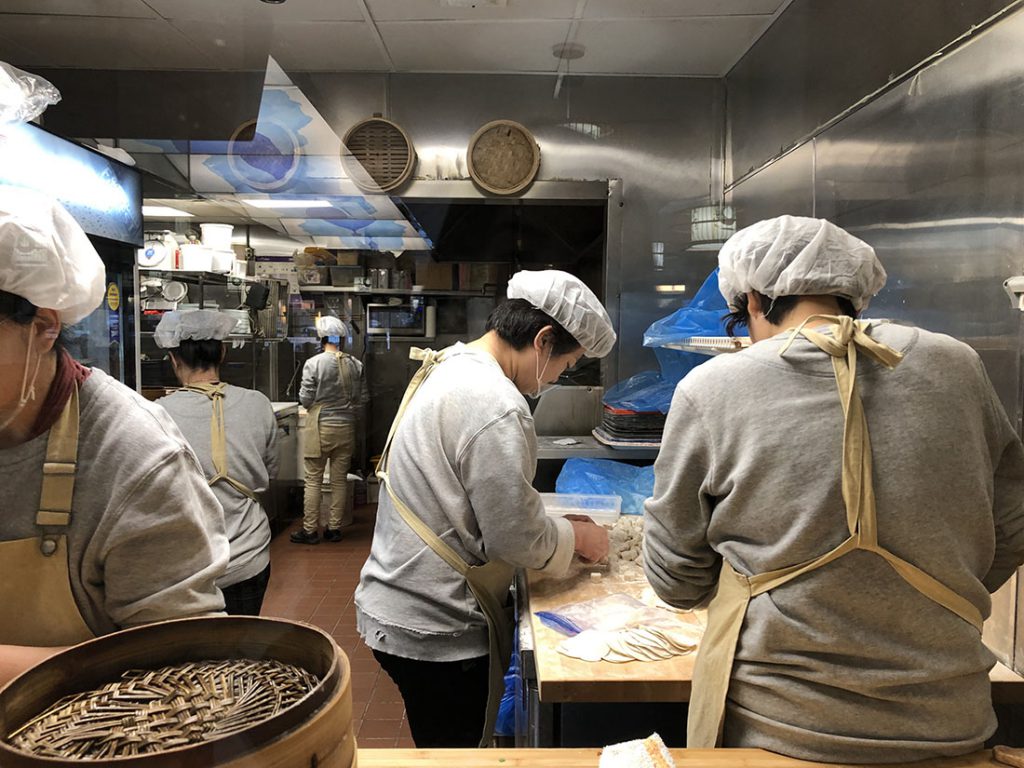By Annie Lin
Medill Reports
“What is authentic?” Rooh’s executive chef Sujan Sakar remarked. “Nothing is authentic.”
“I am having a hard time with the definition of authentic anyhow,” said longtime Chicago Tribune restaurant critic Phil Vettel. He thinks that it is going to be impossible to find authentic or traditional restaurants.
In recent years, the $30.1 billion restaurant industry in Illinois has seen an emergence of restaurants marketed as contemporary, modern, fusion, and globally inspired. This raises the question of whether these new restaurants are replacing traditional, family-run ethnic restaurants.
For 22-year-old Indian restaurant Sabri Nihari on Devon Avenue, also known as Chicago’s Little India, “most of the customers that come here, they prefer to keep it traditional,” said restaurant manager Safdar Khan.
“I know other places are blending and adding new things,” he commented. “Which is good. It is something new, and it really caters to a different set of customers.”
“The patrons are much more sophisticated than they were when I started out, we have gotten a lot more diverse,” Vettel remarked about people’s changing tastes from 30 years ago to now.
“I think that a chef can only be as experimental as his clientele allows him to be,” Vettel explained. “One of the things chefs like about Chicago is that the dining public is open to new things.”
For Rooh, that is what chef Sakar anticipated. “You have a diverse culture here, I think Chicago has a very good balance,” he said. “[The customers] are getting something they’ve never expected.”
Sakar’s “progressive Indian cuisine” consists of ingredients such as fresh truffle, Bengal mustard cream, avocado raita and uni mali curry.
“I use Indian flavors which are traditional, paired with local ingredients” to upgrade dishes without altering its inherent flavors, Sakar explained.
“We are thinking ahead. Everything is changing,” he continued. “We have to keep up with that without losing the flavors or losing what we are cuisine wise.”
“I am cooking Indian food in America. I am not cooking Americanized Indian food,” Sakar asserted.
There is a debate surrounding what is currently being accepted as American food, compared to what is being categorized as ethnic food.
The U.S. Census Bureau does not define “ethnic” cuisine. However, they categorize “food services” using labels including “White, African American, American Indian, Asian, Asian Indian, Chinese, Filipino, Japanese, Korean and other Asian.” This includes European cuisines under the category “white.”
“Most Americans, until recently, considered Italian food to be in some ways different than typical American food,” said Professor Krishnendu Ray, department chair of nutrition and food studies at New York University.
Not many people make that differentiation anymore in cities like Chicago and New York, Ray said.
“It is inversely related to the end of immigration of poor people from that country,” he commented on the rise of a nation’s cuisine in terms of global prestige.
“Some cuisines have higher prestige than others, an example of that is Italian food which has a lot of prestige. In some ways, Mexican food does not,” he stated. “I don’t think Italian food could have become as prestigious as it has today if poor, working-class Italians continued to come in today.”
“My argument is that it’s a matrix of population, prestige, racial and ethnic difference, and how a population does over time with upward mobility,” Ray called this a hierarchy of taste.
He argued, “cultural prestige follows power of capital.” If the Chinese economy continues to grow at the rate at which it is going, we are going to see the end of Chinese migration of poor working-class people and more Chinese expats at the upper end of the social hierarchy. That is going to flip the idea of Chinese cuisine as an upper-class cuisine, Ray said.

For Chinese restaurant Qing Xiang Yuan Dumplings, Samantha Man’s father decided to open a dumpling restaurant when he struggled to find authentic northern Chinese food.
He started the restaurant in 2014, and he still wakes up every morning to handmake the dumpling fillings from their secret family recipe, Man said in Mandarin.
At Taste of Szechuan in Chinatown, restaurant manager Bao Lin explained they want to preserve traditional Chinese flavors. “Our chefs are all from Szechuan province. We wanted to bring Szechuan cuisine to the U.S., and we want to stay true to ourselves,” Bao said in Mandarin.
According to the U.S. Census Bureau (2012), the most popular categories of non-American food in Cook County are Chinese (1,132) and Asian Indian (718). However, it does not offer greater specificity.
Ray conducted his own studies utilizing data from the restaurant app, Yelp. To analyze the disparity in prestige and price-point of a cuisine, Ray filtered restaurants by cuisine and price range “as a surrogate for prestige.”
He found that the cuisines most highly ranked in the expensive or prestigious range were American (14%), Southern (11%), and French (9%). Whereas, the lower-ranked cuisines were Arabic (1%), Greek (2%), Meditteranean (2%), Vietnamese (2%), Indian (2%), Chinese (3%) and Mexican (3%).
For Jagdish Khatwani, owner of Indian restaurants Tiffin and Udupi Palace, he has been in the restaurant business for 25 years, but he does not see newer restaurants as competition.
“All the markets are different. [Our restaurant] is going to stay the way it is now. Sometimes there are ups and downs in the business,” he expressed matter-of-factly.
“People get tired of eating the same thing, they want something new, something creative,” Khatwani said.
That creativity can be seen through chef Sakar’s cooking at Rooh. “Everyone is using influences. There are not many boundaries anymore,” Sakar implied.
Ray also reflected on the fluidity of influence and change, saying, “there is not much we can do about it other than observe, analyze and reflect on it.”
“We cannot prescribe cultural change, because the cost of prescribing cultural change is much more invasive than it is worth the trouble,” Ray said.


